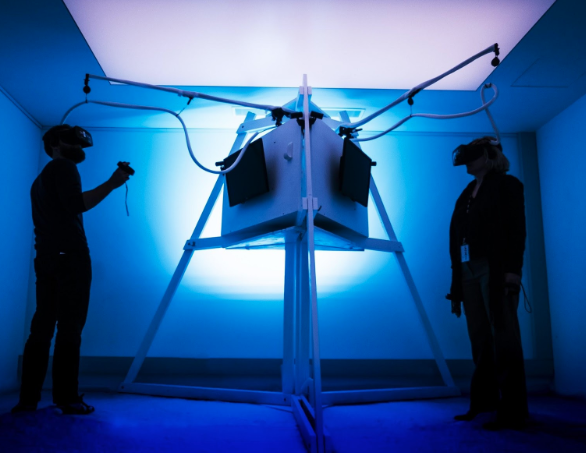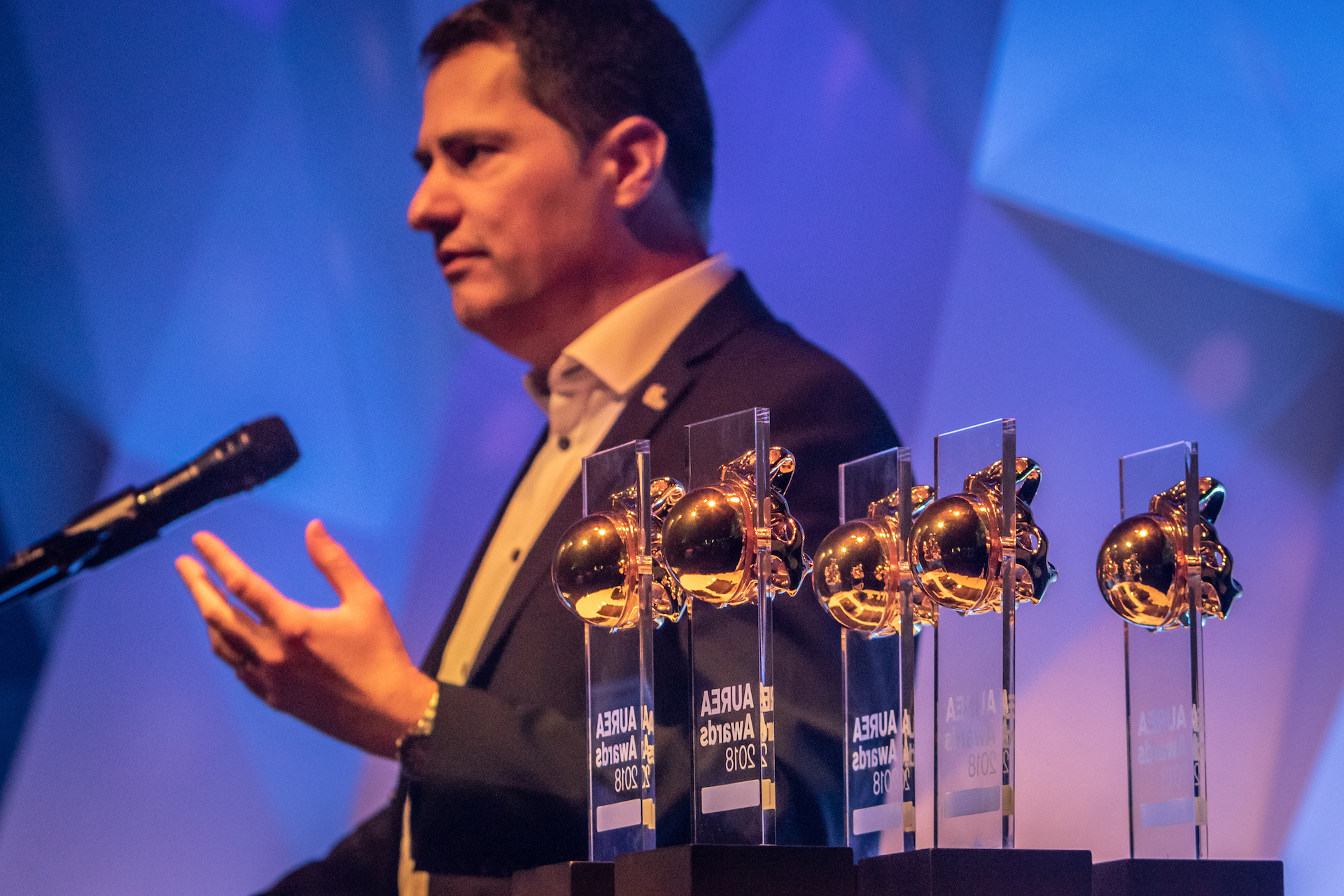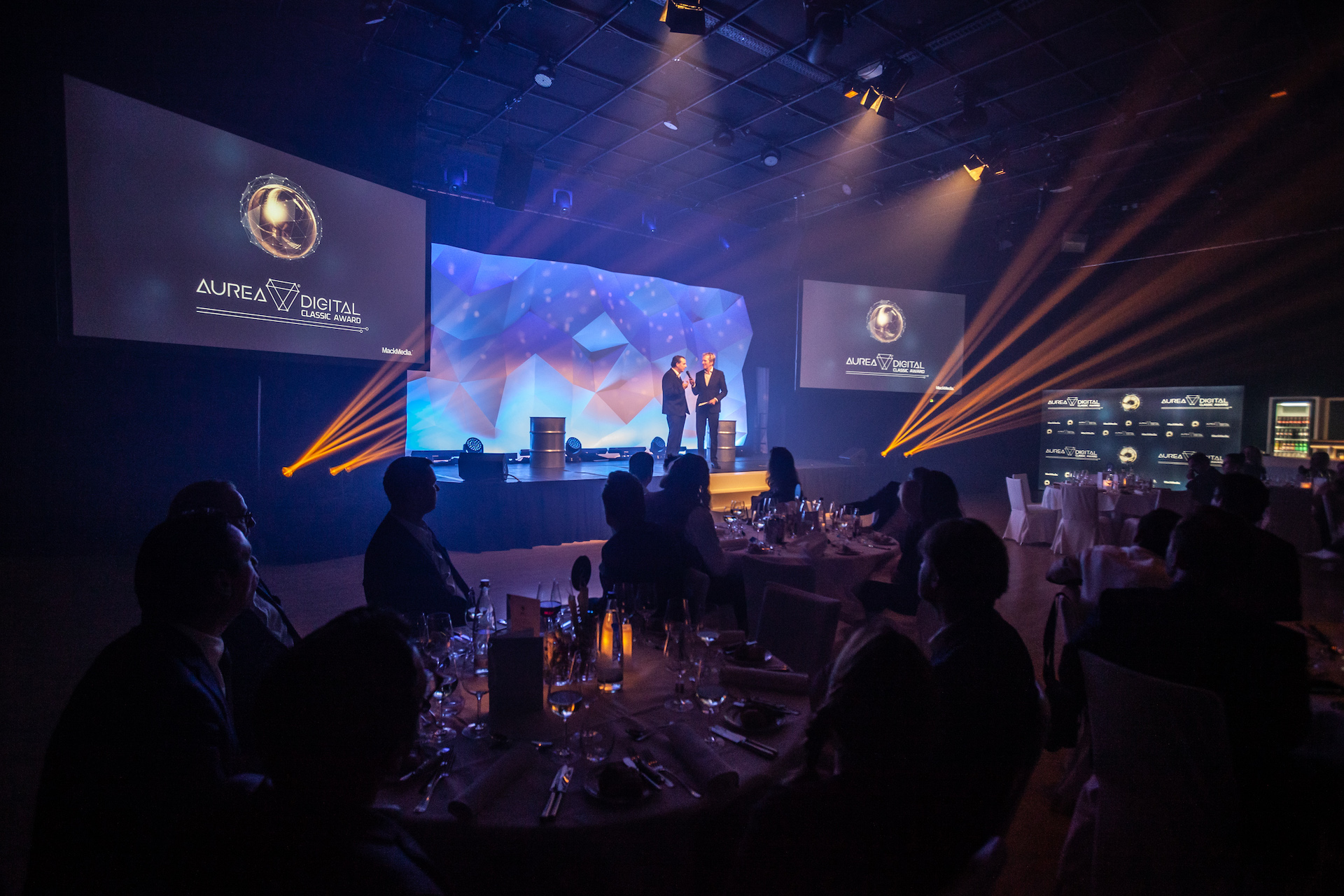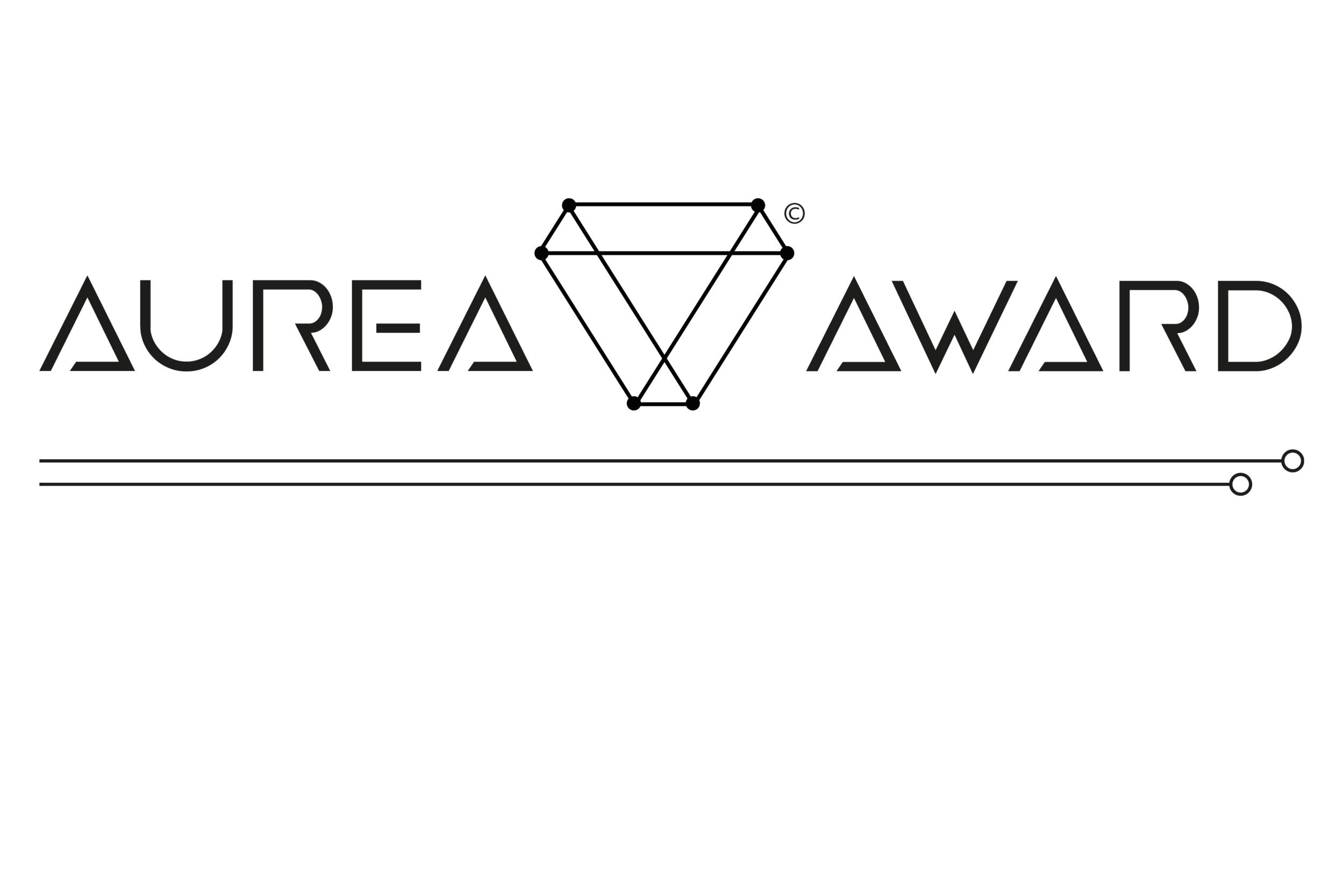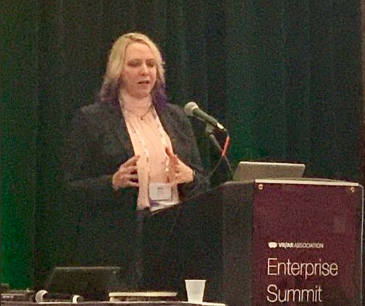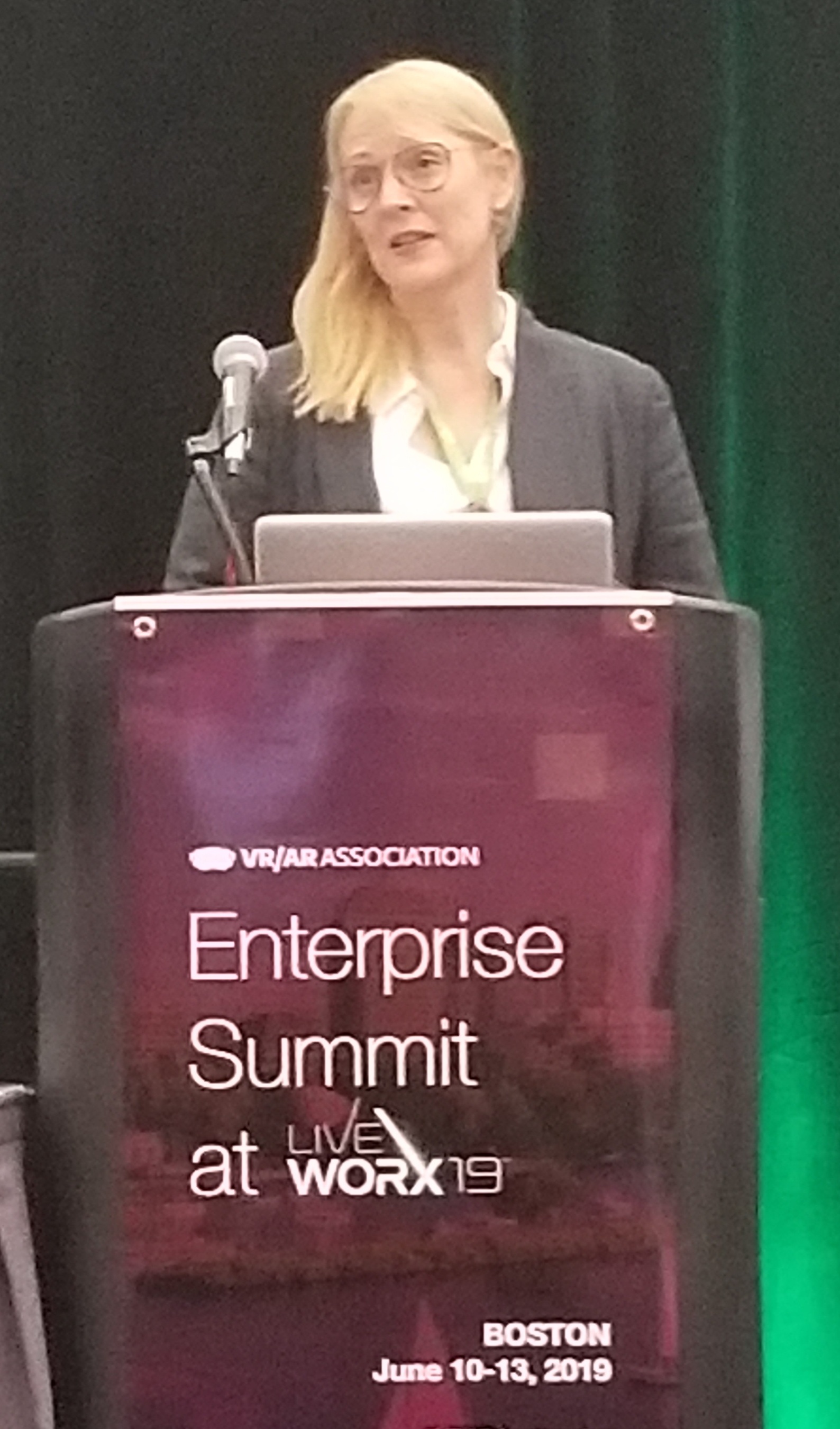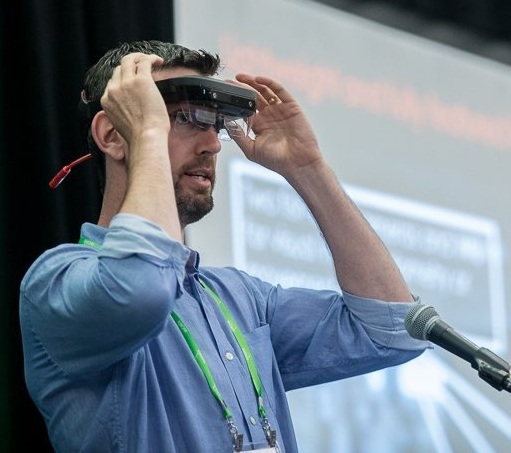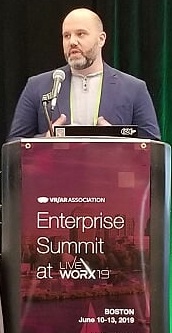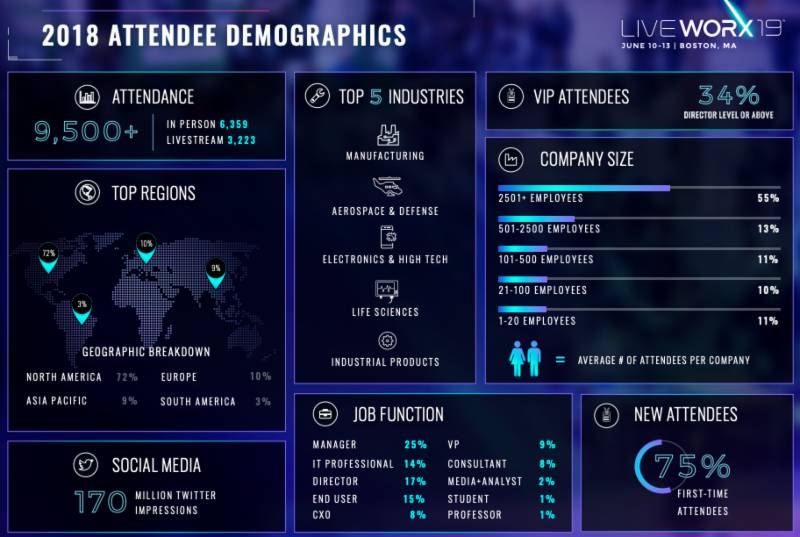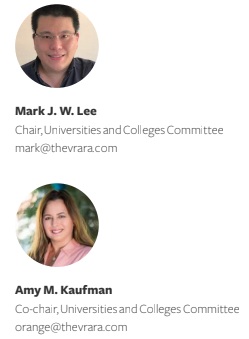Three Advancements for a Seamless Future in VR. Plus, VIATechnik's collaboration with Virgin Hyperloop One
Come meet us at the VR/AR Global Summit Nov 1-2!
By Michael Fontana, Senior VDC Engineer, VIATechnik
Testing a virtual environment through VR. Photo: VIATechnik
Over the last few years, one of the biggest questions looming over the discussion of VR has been user adoption: "When will VR become a viable platform?" Development of VR hardware has advanced significantly, service platforms have been built around that hardware to deliver content to users, and yet it still seems that VR is a cumbersome (and expensive) endeavor.
This problem is especially acute for industries like AEC which rely heavily on visual content to deliver experiences and information. Professionals in these industries understand the symbiotic relationship between tools and design--that each has great potential to drive the development of the other--and so the problem for us is not just the experience of using the hardware, but the limitations that currently poses for our ability to design and communicate our ideas.
The Virgin Hyperloop One test site simulated in a gaming engine. Photo: VIATechnik
In tandem with this, the AEC industry continues to push towards ever higher levels of interaction and fidelity through visual mediums. VIATechnik has witnessed this drive first-hand through many of our projects. One in particular--our collaboration with Virgin Hyperloop One--incorporates scales of simulation beyond most traditional applications: anything from small bolts and wires to the entire surrounding topographic region. As these applications of 3D rendering become more dominant in the AEC industry, the scales of simulation will become more advanced and intricate as well, requiring greater degrees of computational power and sensory experience.
Beyond the “Trough of Disillusionment”
The emergence of Virtual Reality (VR) has been able to sustain this increase rendering demand to a point. It has crossed over from obscure niche technology to mainstream applications, and there is no longer a question of whether it will become viable; instead, we must ask what it will look like when it does. We can look to three particular developments in the near future which suggest that VR accessibility will become significantly more seamless, allowing the medium to meet these demands: First, networked VR environments will become much more commonplace, allowing users to collaborate remotely. Second, these environments will begin migrating to the cloud, reducing the need for powerful, on-site computation. And third, the deployment of 5G network technologies will increase data transfer and reduce latency, eliminating many of the noticeable limitations of streaming applications.
Many current VR applications are still restricted by hardware tethering. Photo: Stella Jacob
Environments Begin to Talk
Those users who have set up a high-end VR experience are familiar with some of the existing constraints: in addition to the cost of workstations powerful enough to run VR applications, most traditional VR setups require the use of a proprietary tethered headset. Further, much of the work done in the AEC industry requires high levels of visual fidelity, which in turn requires significant amounts of data storage and throughput, meaning that the headset cannot be easily untethered from this workstation.The obvious restriction here is mobility - a few feet of cable and a room-scale boundary does not permit much of a spatial experience, and removing this barrier requires the purchase of additional Wi-Fi adapter hardware. Moreover, only one user at a time can be “in” a VR space, limiting our ability to use a shared experience to communicate. Many products currently on the market have taken a first step to alleviating this problem by allowing the local environment to communicate over the internet with other users. Like a multiplayer video game, each player owns and runs a copy of the game on their system while certain information is coordinated across the internet to create a shared experience. This enables remote VR collaboration with one big caveat - each end user still needs the requisite costly hardware to run the VR application locally. In other words, the environment is more accessible but the interface with that environment is not.
Remote servers may replace the need for high-end graphics processing that many VR applications require. Photo: Torkild Retvedt.
The Data Center Is Your Platform
New advancements in the gaming industry mitigate this problem through cloud-based streaming. Under this model, VR environments--which would ordinarily be run locally on the user’s computer--are instead hosted on powerful cloud platforms. These platforms will offer both high-end graphics processing as well as the ability to scale with users. The end user merely needs a headset that can stream the images and audio from the server. Put another way, like visiting a website, the end user’s workstation only needs to connect to the virtual environment, not contain it. Stadia, Google’s new cloud-based gaming platform, proposes this exact model through a subscription service to subvert the traditional purchase of expensive gaming consoles and game titles. Nearly any modern workstation can participate in Stadia by streaming games from the cloud and players can connect from anywhere at a fraction of the cost of a traditional console and game library. It is not a stretch, then, to think that we will begin to see the same standard emerge in AEC applications.
5G: When Networks Become Invisible
For VR to reach peak adoption, it must be able to be accessed by and streamed to numerous mobile devices at high resolution with ease. The introduction of 5G connectivity across mobile broadband is expected to solve this by dramatically increasing bandwidth while shrinking latency. This is a crucial step in eliminating the framerate loss and input latency that can cause negative physiological reactions in users. Currently, some desktop and mobile applications can achieve this, and with the proliferation of connected devices coming with 5G technology, we are sure to see further strides in this area. From the user’s perspective, the typical visceral aberrations of networked applications--things like input lag, slow download speeds, and buffering glitches--will seem to disappear.
The maturity of a platform can be measured by how seamlessly it integrates into our daily lives. While several of these friction points still remain, doubts about VR’s potential have largely been answered: It is now clear that VR and other Mixed Reality interfaces will dominate as the next platform for visually-driven content. The question is no longer “will it be viable” but rather “what will viable look and feel like”. Looking to our existing devices and the advancements that have been made in connectivity, we can begin to understand that VR will become part of this family, offering users the ability to experience content and share information across multiple platforms. Content distribution and collaboration services will be built with seamlessness as a priority, driving greater numbers of users into their ecosystems which will in turn provide the demand for content and application marketplaces. For the AEC industry, then, what is left for us to consider is how we prepare for this future: What will we do with these new capabilities and what impact do we hope to have that was not possible before?
AUREA Award further strengthens VR/AR Association’s Location-Based Entertainment Committee with sponsorship
Working towards a Global VR/AR Entertainment Community
With the sponsorship of the Location-Based Entertainment (LBE) Committee of the VR/AR Association (VRARA), the AUREA Award run by the MackNext creative team of Europa-Park, is expanding its role as enabler and promoter of Immersive Technologies. The support is a commitment to bring the AUREA Award even closer to renowned experts in the Entertainment sector by rewarding the best projects annually worldwide. The close cooperation with the VRARA is a crucial step in this direction by joining its extensive international network of professionals.
“In terms of strategic orientation, communicative approach and target groups, the international industry association, founded already in 2015, is a congenial partner that perfectly mirrors our intentions. Just like the AUREA Award, VR/AR Association is designed to foster collaboration between innovative companies and people in the VR and AR ecosystem. For this reason, we look forward to welcoming VRARA members from around the world to Rust next January.”
The next award ceremony and professional conference will take place on Jan. 15 - 16, 2020 at Europa-Park, a digital innovation leader in their own right with VR coasters, flying and dome theaters, and the latest 4D attractions, where shortlisted state of the art experiences will not only show where the industry is all headed, but will also be pitched live on stage in front of an all-star Jury. All stakeholders from the entertainment sector from startups to investors, and creatives to corporates are invited to get involved and help the community grow.
Interesting in applying? Submissions are now open until November 1, 2019 and come meet them in person at the VR/AR Global Summit in Vancouver on November 2.
“Sharing AUREA´s spirit and entertainment focus, the Location-Based Entertainment Committee’s mission is to build relationships between content creators and venue operators in the entertainment sector. The LBE Committee’s content creators & enablers include the likes of Battleverse, Backlight, Blueprint Reality (Mixcast), Dark Slope, Holocafé, Kaaya Tech, Teslasuit, Ultrahaptics, VR Studio, Dreamcraft Attractions, YDreams Global, The Park Playground, and SpringboardVR which have representatives that meet online monthly to work on everything from infographics and online webinar series to technical white papers and industry surveys. Since LBE consumer spending is expected to reach $809 million by 2022, AUREA Award and the committee will share experiences and insights in order to show the industry all the added-value potentials.”
About Aurea Award
With just 5 AUREA awards up for grabs, film projects, music experiences, live events, games, mixed reality experiences as well as enabling technologies receive center stage in front of a crowd VR & AR enthusiasts. Besides showcasing and awarding the most exciting products and experiences, the conference also delivers thought-leader talks, candid discussions on panels and a slew of workshops, while leaving room plenty of room for networking and enjoyment. In the setting of one of the world's leading theme parks, the conference offers multiple opportunities for groundbreakers to be heard and seen, to connect to the most relevant pioneers in the ecosystem and to become a part of the vibrant AUREA community.
https://aurea-award.com/
About VRARA
The VR/AR Association is an international organization designed to facilitate collaboration between innovative companies and people in the VR and AR ecosystem that accelerates growth, fosters research and education, helps develop industry standards, connects member organizations and promotes the services of member companies. Over 4500 companies, brands, school and 27,000 professionals are registered with VRARA and more than 20 committees are working on best practices and guidelines for the industry.
https://www.thevrara.com/
Recap of our Aerospace Committee meeting with Boeing, Lockheed Martin, US Air Force, among many others
Come meet us at the VR/AR Global Summit Nov 1-2
The VR/AR Association Aerospace Committee continues to grow and evolve. Co-Chaired by Samuel Trevino, Insitu (a Boeing company) and Dr. Alethea Duhon, Air Force Agency of Modeling and Simulation. The Committee is comprised of industry players including DiSTI Corporation, Enduvo, FS Studio, Future Visual, Insitu (a Boeing company), J&F Alliance Group Inc, MAF, among others. You can participate here
Below is a recap of what the Committee participants are working on:
J&F Alliance Group Inc is an award winning AR/VR company and we were highlighted in the NASA Spinoff Magazine this year. We are part of the NASA Tech Transfer program and are actively working with the Space Commerce out of DC.
Future Visual, a UK based VR/AR company, specialises in using VR for training, collaboration and behaviour change. It has developed a platform VISIONxR which enables multi user, multi location, multi device (VR, AR, desktop and mobile) collaboration in the same immersive space. Its key clients include IATA (International Air Transport Association) rLoop and the UK Defence Science and Technology Laboratory". It has identified aerospace as a key sector due to the nature of high risk, high value training required and the need for collaboration and visualization involving complex models.
FS Studio is an emerging technologies and experience design agency with specialties in embedded/IoT development, computer vision, AR/VR and robotics simulations. We’re an award-winning developer based in the San Francisco bay area that excels at bringing high quality experiences to life on complex, novel and proprietary hardware and software platforms for education, entertainment and enterprise usage. We solve complex problems in elegant ways, always with an eye toward the end to end experience. We keep great company having worked with some of the leading brands including: Virgin Orbits, Google Labs, John Deere, Ford, Samsung, Unity, Hasbro, Spin Master, PBS kids and others.
Bending Time Technologies is a startup located in Vancouver, Canada developing the next generation 3D Earth application. It provides real-time simulations from space down to the surface at true-scale with 1 cm or better precision in 3D and VR. Founded by Sean Treleaven who has over 17 years of experience in the military and aerospace industries, Bending Time aims to bring high-quality military simulation and visualization capabilities for the cost of an app.
Enduvo is a powerfully simple, no code, way to create augmented and virtual reality content. It’s the only AR/VR content authoring tool that allows anyone, with just a few clicks, to create and quickly share visually stunning, interactive, and immersive experiences. Aerospace organizations use Enduvo to lower costs, speed content delivery, and improve the effectiveness of their training and collaboration. Enduvo is a recent winner of several US Air Force Small Business Innovation Research (SBIR) contracts. The Air Force will use Enduvo to bolster mission readiness by creating and delivering consistent and cost-effective immersive training across many different skill levels, job classifications, and geographies. With Enduvo, people decrease content development costs up to 60%, reduce content delivery time up to 70%, and increase competency up to 80%.
MAF International Mission Aviation Fellowship is an international Christian organisation whose mission is to fly light aircraft, and to use other technologies to bring help and hope to people in some of the world’s poorest communities. Every four minutes a MAF plane is taking off or landing somewhere in the world to assist over 1,000 other organisations. We have about 130 airplanes that fly in remote locations around the world. We are looking at training young people with engineering apprenticeships and growing our ability to train these local people who don’t have opportunities in poor countries. I would love to look at the internet of things to work on solutions with training.
Boeing/Insitu designs commercial and military aircraft to be used around the world and in space. We seek to modernize a turn-key distributed training solution capable of maintaining compliance with various governing agencies around the world, while not sacrificing standards and quality of training. Over the past 2 years, Insitu has graduated more than 3,000 pilots and technicians to work on UAS deployed around the world. Our goal is to provide a seamless solution with critical contributors to continue our global training scaling initiative.
More info here
Email info@thevrara.com if you would like to participate on our next conf call!
Lynn Rosenthal of Periscape VR will Co-Chair the VR/AR Association Travel & Tourism Committee
We are thrilled to announce Lynn Rosenthal of Periscape VR Experience Centers will co-chair our Travel & Tourism Committee along with Darshan Lama of Expedia and Craig Vezina of Realcast.
Email info@thevrara.com if you would like to participate!
This committee will create best practices, guidelines for Travel & Tourism. Specifically, we will identify opportunities and accelerate widespread adoption of VR/AR technologies in the travel industry by OTAs, Airlines, Airports, Lodging, Conference Centers, Destination Marketing Organizations and other Travel companies, for marketing, branding and enhancing the user experience through each phase of the traveler’s journey (dream, plan, shop, book, pre-trip and post-trip)
I’m excited to Co-Chair this committee and look forward working aside my esteemed colleagues to drive our mission forward globally
A Chance to Be Involved In the Largest Training and Simulation Conference in the World in our VRARA Pavilion on Dec 2-6 I/ITSEC 2019 in Orlando
The VR/AR Association has a unique partnership with I/ITSEC, the world's largest modeling, simulation and training conference. VRARA has set up excellent opportunities for their members who are interested in getting more involved in the government/military sector. Please see the information below with a description on how you can get involved.
Reserve Your Space at the VRARA Pavilion
The VR/AR Association has negotiated a discounted space for companies that don't traditionally do work with the government. If you have a solution that addresses training and simulation within the warfighting, first responder, emergency management, or healthcare sector, this is the conference for you! Join other VRARA members as we culminate to showcase the breadth of our work. If you are interested in learning more about securing booth space at the conference, please contact orlando@thevrara.com
RSVP for our Live Webcast on Innovation in VR & AR in AEC with Microsoft, Unity, Samsung, IrisVR, and VIATechnik
Also, come see Microsoft, VIATechnik, and many others at our VR/AR Global Summit, see here
The VR/AR Association's AEC industry committee will present the latest case studies and innovations.
The VR/AR Association's Defense and Intelligence Committee aims for Collaboration
Attend the VR/AR Global Summit Nov 1-2 in Vancouver to learn more about VR/AR solutions for Defense.
The ongoing mission of the VR/AR Association (VRARA) Defense and Intelligence Committee is to bring together industry, government and immersive technologists to collaborate on standards and use cases, according to VRARA’s DC Chapter Vice President Sophia Moshasha.
The defense and intelligence committee held its launch event in Washington DC in April, with almost 100 attendees amassing to discuss the development and implementation of VR technology within mainly maintenance training, wargaming and battlefield training.
Several particularities of intelligence and defense dictate a different approach going forward for the DC chapter than others within the VR/AR Association might take, according to Moshasha.
Virginia-based VR experience creator Brightline Interactive, where Moshasha works as director of immersive platforms alongside managing principle and DC Chapter President Tyler Gates, has worked with several government agencies over the past 15 years, most notably an emergency management agency on flood simulations used to raise awareness among and communicate issues to community leaders.
In her work at Brightline, Moshasha and her colleagues have learned that “government agencies want to prove out the technical capabilities of VR fast”.
She says: “They want a quick turnaround in the research and development and rapid prototyping, so they can start investing in building out this immersive ecosystem.”
The defense and intelligence professionals attending the event April, particularly those from Department of Defense contractors such as Booz Allen Hamilton, also needed the committee to have a Washington DC presence.
Moshasha explains: “It made sense to host the committee here. That’s not to say that the committee doesn’t have global appeal, but in order to attract the defense players, we needed a physical presence here in DC to draw them in and get their hands on the tech. That was the purpose of the launch, and we’re planning similar events.”
The end goal is to get defense and intelligence professionals involved in shaping future initiatives for immersive technology.
“Our major goal is to set the standards for the creation and implementation of virtual environments within defense and intelligence, and the only way we’re going to do that is with collaboration between government, industry and the makers of the technology.”
“That’s what I’m trying to do—gather those three groups to collaborate on standards and research, and have that one voice. I think the VR/AR Association is a great place for industry to develop those standards of practice.”
Attend the VR/AR Global Summit Nov 1-2 in Vancouver to learn more about VR/AR solutions for Defense.
The VR/AR Association appoints Samuel Trevino of Insitu (a Boeing company) as Chair of the Aerospace Committee
Attend the VR/AR Global Summit Nov 1-2 in Vancouver to learn more about VR/AR in Aerospace!
To participate in the Aerospace Committee, email info@thevrara.com
The Aerospace Committee of the VR/AR Association serves as a resource to promote the application of VR/AR technology as a solution to a number of traditional problems in aerospace. The committee will enable the sharing of best practices and information on VR/AR related applications in the aerospace industry as well as curate industry relevant case studies. Furthermore, the committee will, as necessary, shape and recommend best practices for the scaling of VR/AR applications across aerospace.
Areas of focus for the Committee include:
Data visualization
Learning & Training an aging workforce;
Learning and training a new work force;
Troubleshooting and live support;
Safety & EHS as pertains to the aerospace industry
Guided assistance of factory workers & field technicians in aerospace.
Samuel Trevino is a Global Product Training Manager at Insitu (a Boeing company). In his current role, Sam manages products and services for 30+ training courses on 5 Unmanned Aerial Systems in 6 schoolhouses, globally. Insitu has trained and certified more than 3,500 students in the past 2 years. Sam’s teams are spearheading efforts in implementing new instructional technologies that assist their SMEs in surging flow of training and product content leveraging Insitu’s 1.25 million operational flight hours worth of data. Sam’s efforts include implementing a flipped-classroom variant, growing the use and implementation of AR/VR, agile end-to-end product development, providing custom curriculum options, and supporting two programs of record while maintaining compliance with various industry standards. Sam has also served as an Infantryman and Sniper during OIF1 and OIF2.
Join other thought-leaders committed to the application of VR/AR technology in solving the problems associated with the aerospace industry by emailing info@thevrara.com
The Committee meets once a month online, and has a regular quarterly gathering via webinars or hosted events.
Attend the VR/AR Global Summit Nov 1-2 in Vancouver to learn more about VR/AR in Aerospace!
To participate in the Aerospace Committee, email info@thevrara.com
Seabery Sponsors the Training Industry Committee and has over 400+ clients worldwide. The Seabery Augmented Reality solutions are applied to skills training
Training Committee creates best practices, guidelines, and call to actions for our industry.
Seabery is a global tech company pioneering the development of Augmented Reality (AR) edtech solutions applied to skills training. The Seabery platform is being used by more than 400 Government and Industrial clients in 45 countries, with Germany and USA as the early adoption markets. Seabery has 65 employees.
For more info contact Alejandro Villarán Vázquez avv@seaberyat.com
The VR/AR Association appoints Kevin Carpenter of Siemens as Co-Chair of the Energy Industry Committee
To participate in the Committee, email info@thevrara.com
The Energy Committee of the VR/AR Association serves as a resource to promote the application of VR/AR technology in confronting the challenges posed by the energy transition. The committee will enable the sharing of best practices and information on VR/AR related applications in the energy industry as well as curate industry relevant case studies. Furthermore, the committee will, as necessary, shape and recommend best practices for the scaling of VR/AR applications across the energy industry.
Some areas that the Committee will focus, include:
Data visualization
Learning & Training for industry specific needs
Safety & EHS as pertains to the energy industry
Guided assistance of factory workers & field technicians in the energy industry
Kevin Carpenter is currently Head of the Global Operations Technical Education and Competence Center Network for Siemens Power Service Power & Gas with technical education and competence centers located throughout the United States, Germany, China & Egypt. Kevin recently spoke at our VRARA Enterprise Summit
As a co-chair, Kevin will work with the Association and industry at large to create a community of thought-leaders committed to the application of VR/AR technology in solving the problems associated with the energy industry and its transition. Together we will establish a regular forum for exchange that will include industry relevant guest speakers and information exchange; This will include webinars and panels at events, in addition to industry guidelines and best practices publications.
To participate in the Committee, email info@thevrara.com
This Thursday, join us live online for our Storytelling expert panel presenting the latest work with Accenture, Deutche Telekom, Verizon, The Morgan Library, Carnegie Museum, and others
Our Storytelling Committee will present the latest case studies, use cases and best practices for how VR/AR is used in Storytelling.
RSVP for our Healthcare Webinar and learn how VR can reduce anxiety based on ISNR review studies!
Recap of VRARA Enterprise Summit at LiveWorx - our Members gave stellar presentations to the industry on the latest Virtual Reality and Augmented Reality Solutions
We invite you to participate in our VR/AR Global Summit Nov 1&2 in Vancouver! More info here
The VR/AR Association (VRARA) partnered with LiveWorx to host the VRARA Enterprise Summit at LiveWorx 2019 at the Boston Convention and Exhibition Center. LiveWorx is the world’s most respected digital transformation conference for the enterprise to experience the most innovative and disruptive technologies — VR/AR, IIoT, machine learning, blockchain, robotics and much more.
VRARA Members had the opportunity to present to some of the top industrial companies from across the globe like Applied Materials, Arcadis, Boeing, ExxonMobil, Franke, Hasbro, Johnson & Johnson, Julabo, Medtronic, Miller & Long, Toro, Sajo, Shell, Siemens, Sprint, Unilever, Zimmer Biomet, Vaillant Group, Verisk. Presentations included topics on AEC, Aerospace & Defense, Energy, Healthcare, Manufacturing, Training.
Kris Kolo of VRARA and Cathy Hackl VRARA’s Board of Advisors & Enterprise Strategy at Magic Leap.
Enterprise VR/AR Spending is expected to reach $13-20B in 2019, and experience a 89% growth to $120B by 2023. So, where are Enterprises spending all of that money? And are they getting the value out of this level of investment in VR/AR? Matt Short of Accenture from our Silicon Valley Chapter shared with us what Accenture is seeing in the market and where their clients are spending the money.
Dan Cotting of Shockoe from our Virginia Chapter gave an excellent overview of strategy for delivering a rapid return on enterprise VR/AR. Dan has worked with clients like Lexus, JB Hunt, Arrow Electronics which has helped shape his beliefs that VR/AR are poised to usher in an entirely new approach to business operations.
Raj Puran, Intel from our Austin Chapter talked about how Intel is driving VR into enterprise and how to overcome the resistance of adopting new technologies.
Marlo Brooke of Avatar Partners from our LA Chapter demonstrated to us an example of how VR/AR is used in the commercial construction industry.
Sivan Iram, Lenovo from our Silicon Valley Chapter demonstrated the newly announced ThinkReality Platform and AR headset from Lenovo, and gave us some great insights!
Frank Black of HTC Vive Enterprise shared with us high-value use-cases from the DoD, Healthcare, and Emergency Response sectors.
Chad Eikhoff of Trick 3D Studios from our Atlanta Chapter along with their customer InterContinental Hotel Group (IHG), discussed an end-to-end enterprise strategy how VR/AR can be used across sales, design, marketing, and design departments in enterprises.
John Cunningham of DiSTI Corporation, from our Orlando Chapter (which is considered to be the Modeling & Simulation Center of the US!) organized an amazing panel on the use of VR/AR in Aerospace.
A fascinating group presentation on healthcare and VR/AR was given by Zimmer Biomet and Precision OS’s Danny Goel, a practicing Surgeon and CEO from our Vancouver Chapter. Together, they are reimagining the educational landscape for health care professionals.
Geof Wheelwright of Atheer, from our SF Chapter and Chair of our Enterprise Committee organized an excellent panel that explored where VR/AR are getting the most traction and how the market has evolved over the last couple of years.
Corporations invested $87B on Training in 2018 and according to Nielsen reports, Enterprises can save 15% ($13B) on Training with VR/AR; VR has retention rates of 75% while traditional methods are only 10%. Jonathan Moss of Sprint Retail Stores and a Member from our Missouri Chapter and Co-Chair of our Retail Committee showed how he’s using VR to train his staff and the ROI benefits. Our Training panel of speakers further discussed VR/AR and Training with additional real-world use cases from Tom Turner of Exxon Mobil and Jay Fraser, HP.
Our AEC specific presentations included Katy Rupp of Ghafari and member from our Detroit Chapter, Aubrey Tucker of ETRO Construction, and a member from our Vancouver Chapter, Vivek Sharma of Magic Leap, and a panel moderated by Mike Festa, VRARA’s Boston Chapter President.
Next we had a Group Presentation focusing on 2 case studies - Siemens Power/Gas & HP Digital Printing and how VR/AR is being used to improve technician and field services.
A recent Gartner report stated "The biggest barrier to the adoption of VR/AR is the lack of good user experience," and Clare Bond of EPAM Systems from our SF Chapter showed us how we can bring experience design to VR/AR.
Thank you again to our Summit sponsors!
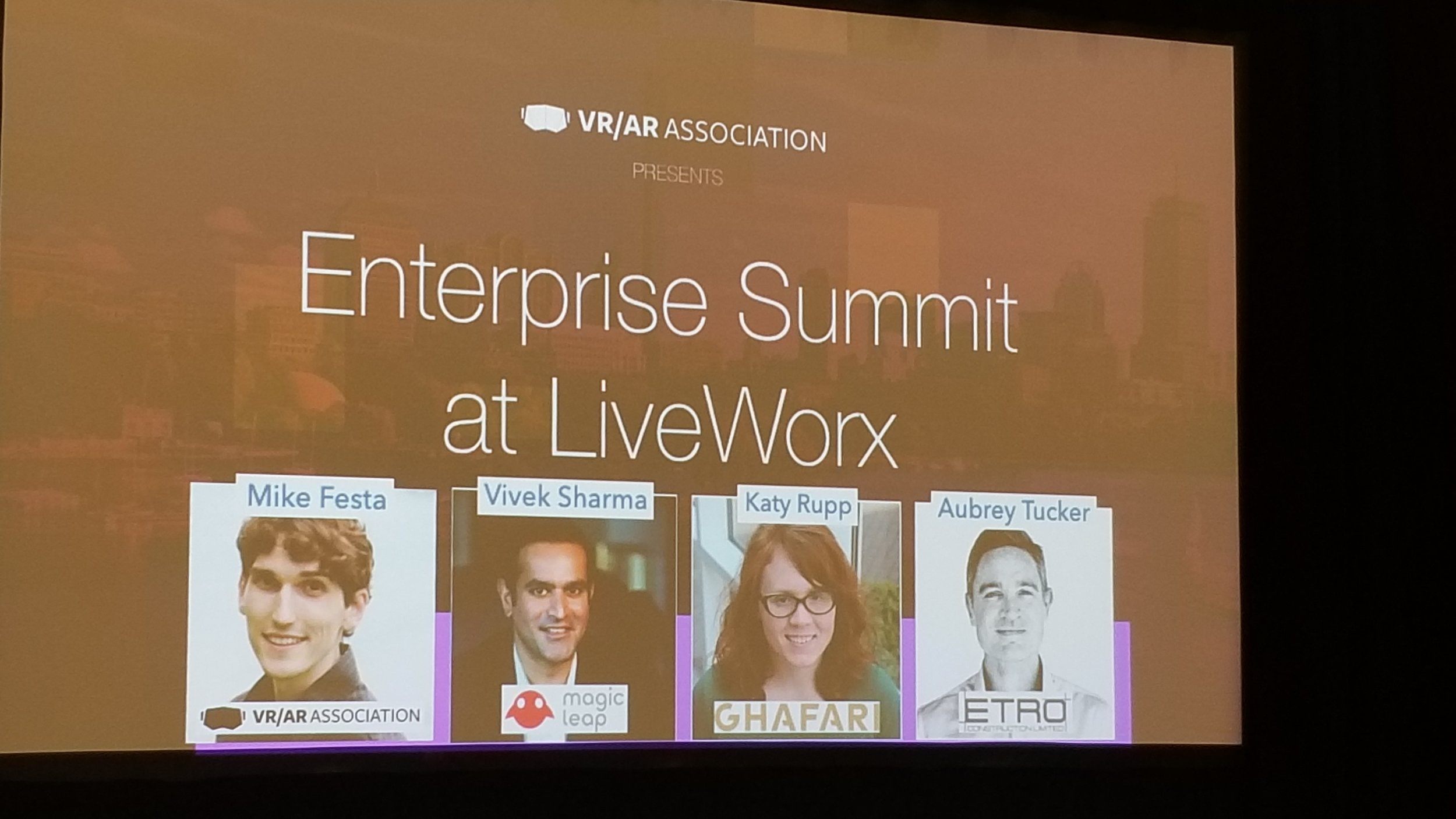
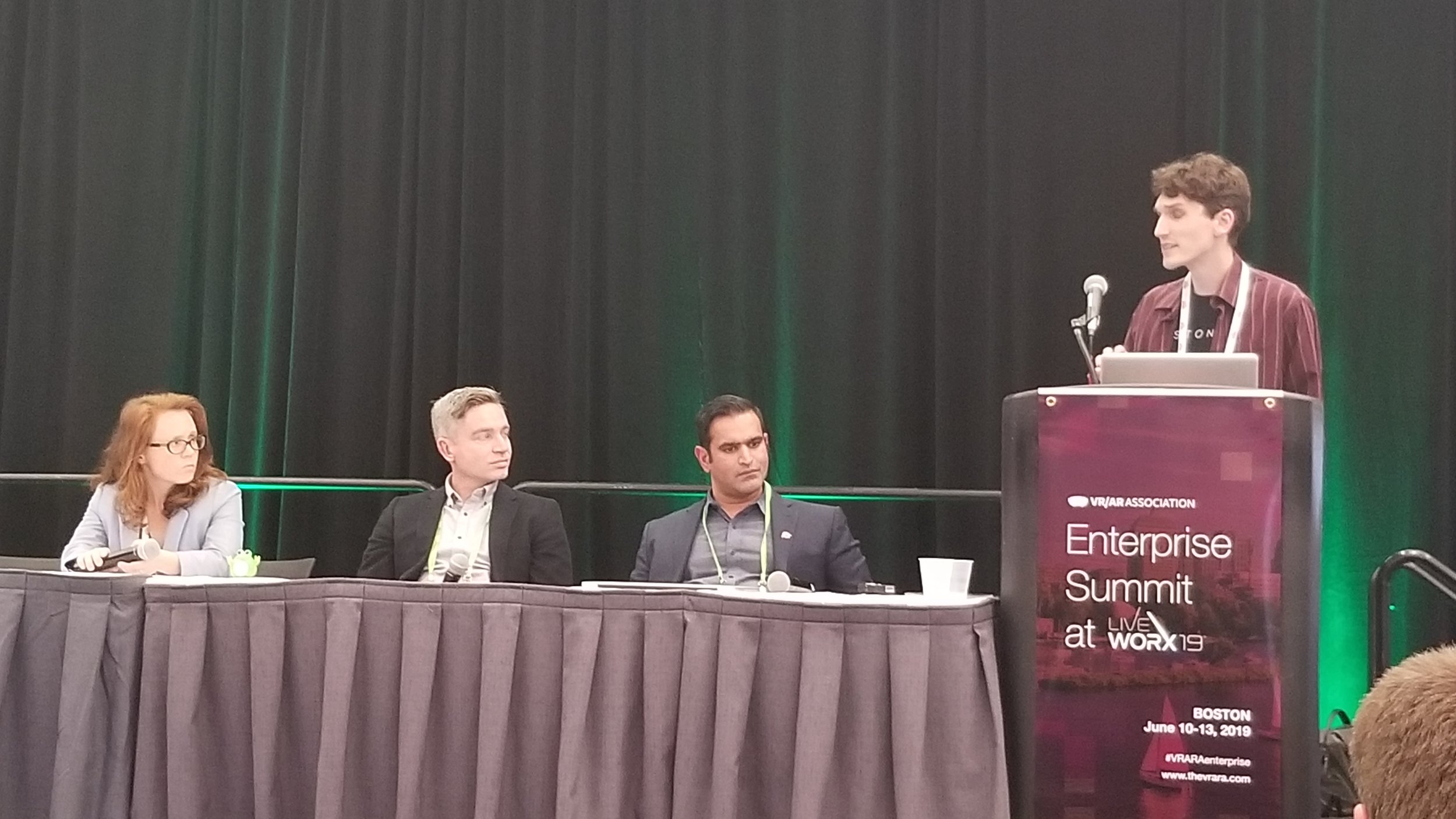
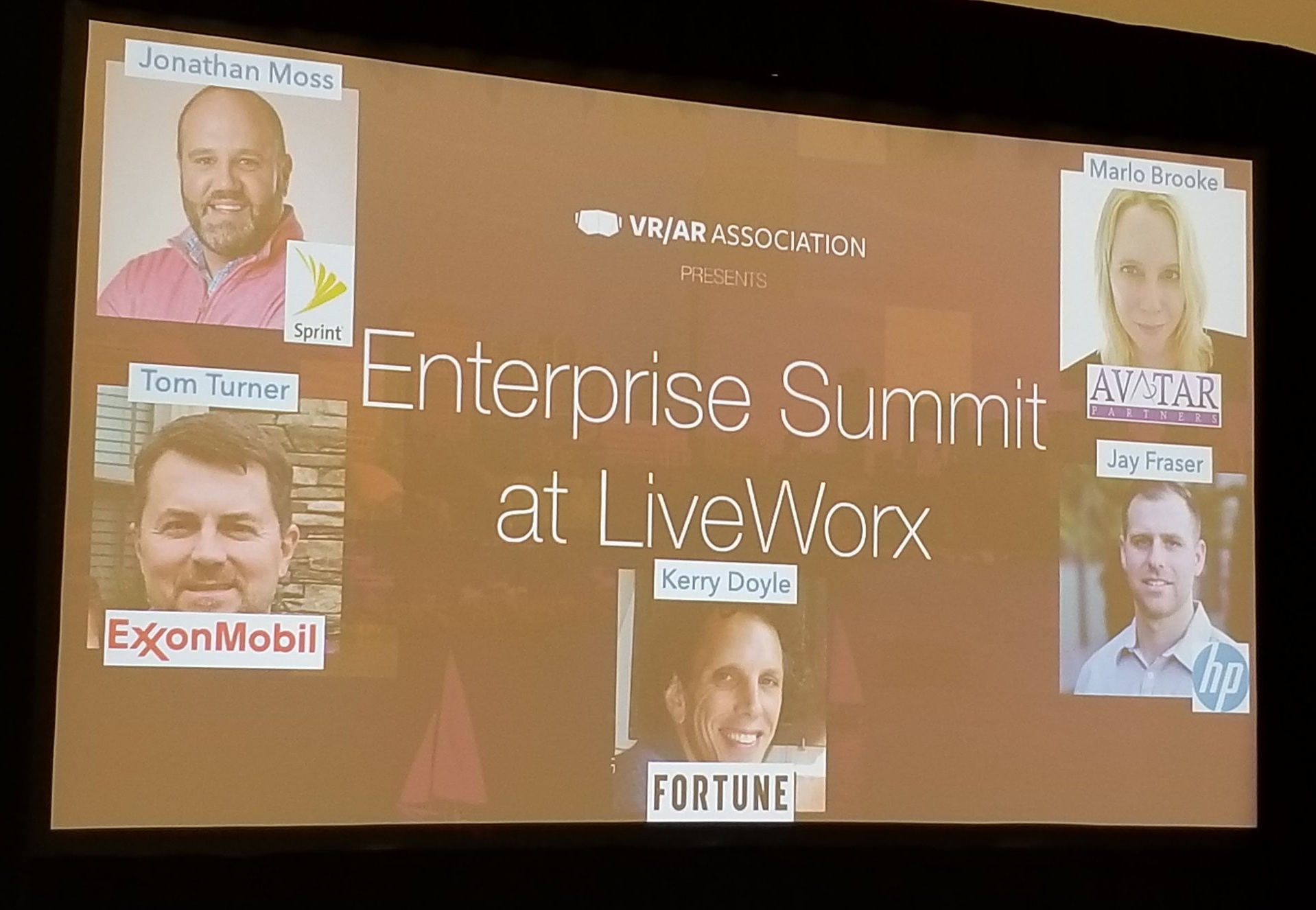


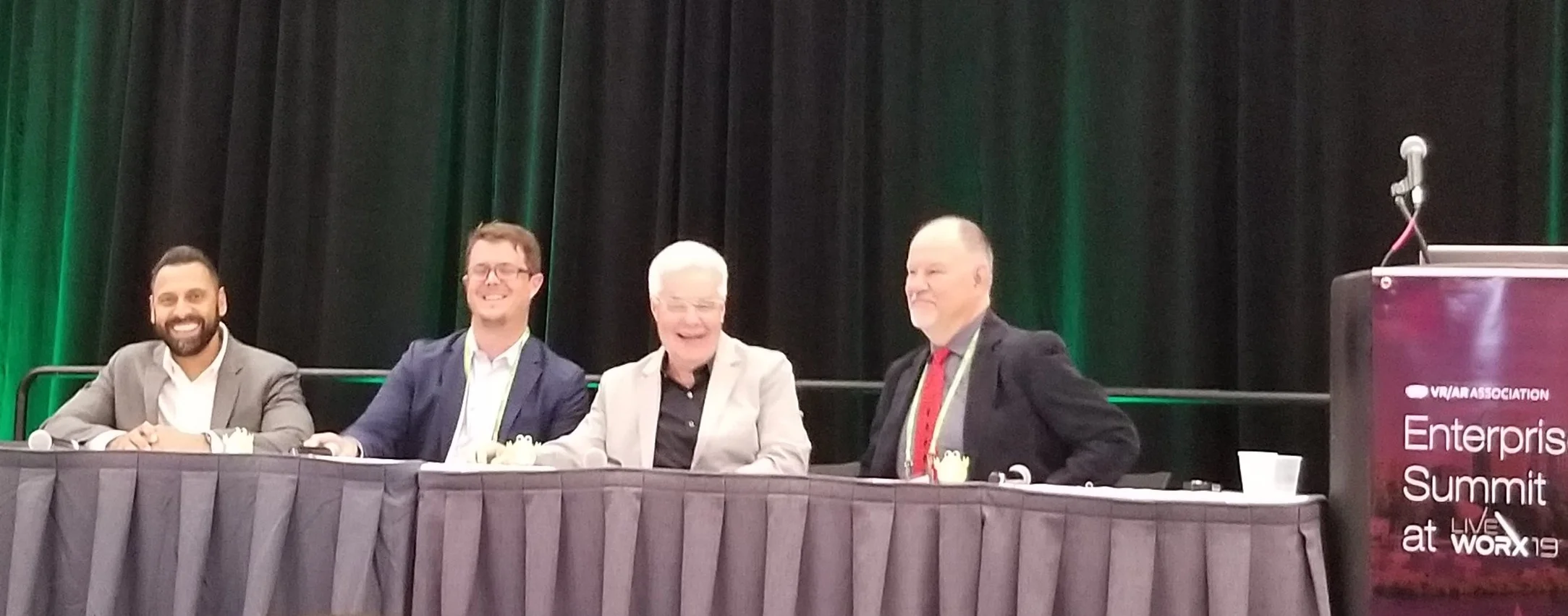
We invite you to participate in our VR/AR Global Summit Nov 1&2 in Vancouver! More info here
Companies participating at our VRARA Enterprise Summit at LiveWorx June 10th. You can still save $800 for LiveWorx June 10-13
Get tickets here!
The VRARA Enterprise Summit at LiveWorx starts next week on Monday, June 10th, taking place at at the Boston Convention and Exhibition Center. LiveWorx is June 10-13. With our Summit ticket, you save $800 on the LiveWorx All-Access-Pass (4 days)!
Our Summit will bring together the best minds in VR/AR from across the globe. Presentations from industry leaders will include topics on AEC, Aerospace & Defense, Energy, Healthcare, Manufacturing, Training, UX & Design, and much more.
LiveWorx is the world's most respected conference for the enterprise to experience the most innovative and disruptive technologies — VR/AR, IoT, machine learning, blockchain, robotics and much more. 6500+ attendees are expected. LiveWorx is June 10-13.
Below are sample of companies attending the Summit and more info about the events:
June 10th at LiveWorx (LiveWorx is June 10-13)
30 Sessions, Panels, Demos. 40 Speakers
Presentations & demos from Accenture, Atheer, Boeing, ExxonMobil, Fidelity, Intel, Julabo, Lenovo, HP, HTC, Magic Leap, Siemens, Sprint, Zimmer Biomet, and others.
Meet executives from Applied Materials, Arcadis, FlightSafety, Franke, Johnson & Johnson, Medtronic, Miller & Long, Toro, Sajo, Shell, Sprint, Unilever, Vaillant Group, Verisk, Whirpool, and other industrial corporations looking for VR/AR solutions!
Networking Lunch, Breaks, and Reception
$800 discount for LiveWorx All-Access-Pass (4 days)!
June 10-13 at the Boston Convention and Exhibition Center
6500+ attendees, 640+ speakers, 240+ sessions, and a 200,000 sq. ft. exhibit hall filled with VR/AR, IIoT, Robotics, and Enterprise solutions.
Demographics from 2018:
Ticket Prices go up May 31st! Register now for our VRARA Enterprise Summit & LiveWorx and save $800! See you June 10-13 in Boston!
June 10th at LiveWorx (LiveWorx is June 10-13)
30 Sessions, Panels, Demos. 40 Speakers
Presentations & demos from Accenture, Atheer, Boeing, ExxonMobil, Fidelity, Intel, Julabo, Lenovo, HP, HTC, Magic Leap, Siemens, Sprint, Zimmer Biomet, and others.
Meet executives from Applied Materials, Arcadis, FlightSafety, Franke, Johnson & Johnson, Medtronic, Miller & Long, Toro, Sajo, Shell, Sprint, Unilever, Vaillant Group, Verisk, Whirpool, and other industrial corporations looking for VR/AR solutions!
Networking Lunch, Breaks, and Reception
$800 discount for LiveWorx All-Access-Pass (4 days)!
June 10-13 at the Boston Convention and Exhibition Center
6500+ attendees, 640+ speakers, 240+ sessions, and a 200,000 sq. ft. exhibit hall filled with VR/AR, IIoT, Robotics, and Enterprise solutions.
Demographics from 2018:
The VR/AR Association Publishes the Universities and Colleges Report with over 40 Institutions that offer Virtual Reality and Augmented Reality Courses and Programs
An educated workforce is a more than a qualified workforce; it is citizenry embracing curiosity. That very curiosity, encouraged by educators, creates the realm of possibility for a thriving, human-centered global populace. Enterprise may develop novel and innovative products with the latest VR/AR and immersive technologies, but without access to a trained, well-educated, and yes, curious workforce, business and industry cannot flourish or compete globally, no matter how cutting-edge or groundbreaking the technologies may be.
The overarching goal of the VRARA Universities and Colleges Committee is to increase higher education’s curiosity and knowledge of VR/AR. We seek to support and promote the bringing together of diverse disciplines, stakeholders, and interest groups within and across institutions in the service of learning both with and about VR/AR.
This report represents the first in a series of steps intended to advance that goal. It provides a high-level overview of over 40 institutions around the world are doing in this space, including:
VR/AR courses and programs being offered;
Use of VR/AR to support learning and teaching in other courses and programs;
VR/AR-related research and development activity being undertaken;
VR/AR in other areas of the institution (e.g., recruitment/ marketing/outreach, libraries, student services).
We hope that the report will be a useful resource for locating expertise, facilitating connections, and building collective capacity among those who are part of the growing community interested in the potential of VR/AR in higher education.
Beyond this report, a further role of the VRARA Universities and Colleges Committee is the coalescing of a higher education– industry alliance aimed at bridging the gap between current educational practices and offerings on one hand, and the emerging workforce needs and demands on the other. To that end, we have recently embarked on an environmental scan of major industry sectors using or otherwise impacted by XR— such as transportation, medicine and healthcare, arts, media and entertainment, and advanced manufacturing—the findings of which will be cross walked to curricular and pedagogical approaches as a means of better understanding how we can prepare students for the jobs and careers of the future.
In the words of Jean Piaget, “the goal of education is not to increase the amount of knowledge but to create the possibilities ... to invent and discover, to create [ people ] who are capable of doing new things.” Join us in our efforts as together, we forge a path for a thriving future of higher education, and of a global workforce enabled by as well as further enabling next-generation VR/AR and immersive technologies.
RSVP for our Fireside Chat with Charlie Fink, Vertigo Games, Schell Games, and Ubisoft. A candid discussion about designing and licensing Games for Arcades
Location Based Entertainment consumer spending is expected to reach $809 million by 2022, but what about from the development perspective…how do business models differ here from the rest of the Games Industry? Are releasing, licensing and creating titles for Arcades really all that much different? And is there a new type of Gamer for whom these titles designed for?
This fireside chat moderated by the LBE Committee’s go to man Charlie Fink, will be asking some of the most recognised Games Studios how they are diversifying their portfolios by offering unique gaming experiences for Out-of-Home Entertainment and how making the move to LBVR compares with developing successful titles for the home consumer market (console, PC, mobile, VR, etc.)?
Schell Games – I Expect You to Die! & Until You Fall
Ubisoft Blue Byte – Escape the lost Pyramid – Assassin's Creed
Vertigo Games – Arizona Sunshine




